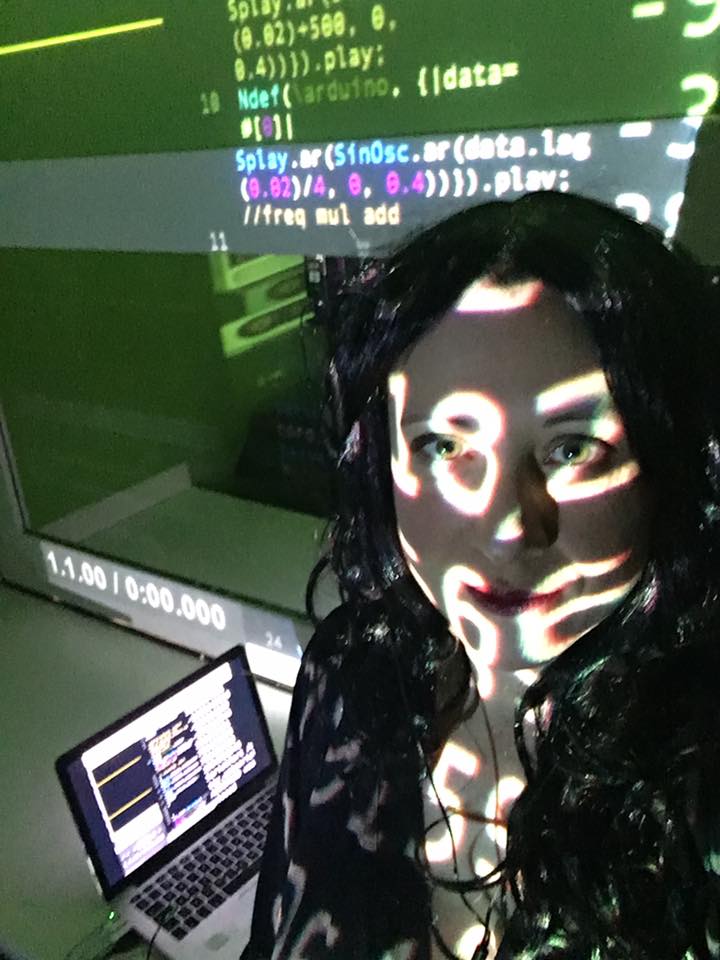OB-scene takes inspiration from Jane Bennett’s Vibrant Matter (2010) in which she argues that human agency has echoes in non-human nature and vice versa, shifting away from anthropocentrism towards the concept of ‘vital materiality’ that runs across bodies, both humans and unhuman. Furthermore, OB-scene is affiliated with an emerging movement of women and technology called ‘XenoFeminism’ (XF). It introduces the idea of techno-alienation and focuses on the concept of other/diverse desires, new forms of desiring, experiencing something other (Laboria Cuboniks 2015). In this specific work, this takes the form of a technofeminism incorporating the fluid, the non-human and the diverse. In this performance, the body is fused with the technology, rather than empowered or enhanced by technology itself, body and technology become a unique actant (Latour 2009) enabling the audience to experience the sensorial assemblage as a space for communal experience with political implications. OB-scene is as an immersive environmental work where the senses, affect and memory were key features of ‘assemblage thinking’ (Hamilakis 2017).
A paper was published on the peer reviewed journal Organised Sound: https://www.cambridge.org/core/journals/organised-sound/article/obscene-a-live-audiovisual-performance-for-photoplethysmograph-and-female-body/7F34EBCDF429D52CBEB462944094C893
This performance took places in various settings:
Transmediale (Panic Room in the panel ‘Post-Digital Anxiety, From C to X – an alphabet of intersectional feminism’, Haus der Kulturen, Berlin 2016);
FutureFest (FutureLove, Panel ‘Synthetic emotions’, London 2016);
DRHA 2016: Digital Research in the Humanities and Arts (University of Brighton 2016);
Metabody Forum (Brunel University 2016), an EU-funded programme involving collaborators and advisors such as Donna Haraway, N. Katherine Hayles, Annie Sprinkle and Ricardo Dal Farra.
